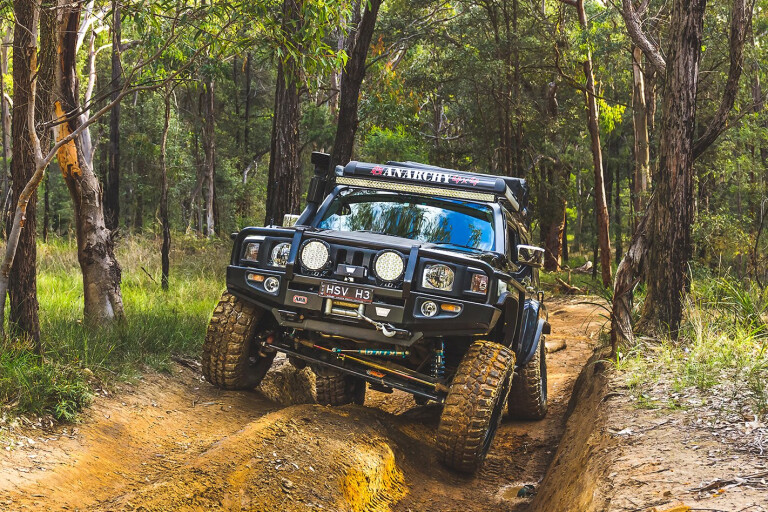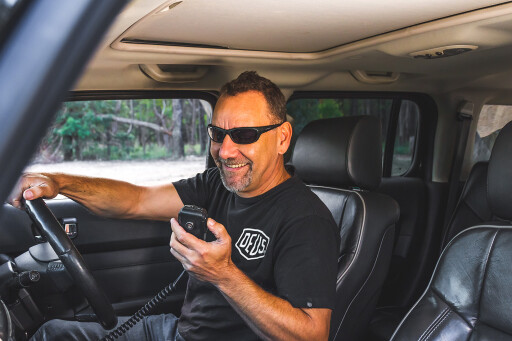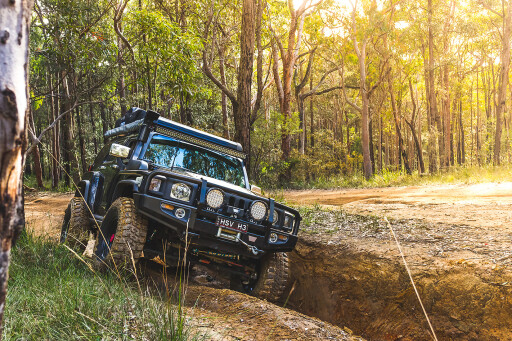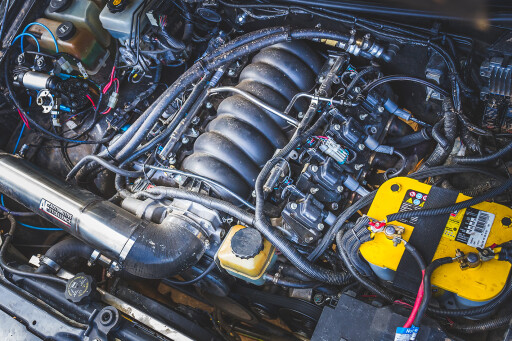
Picture this: you’re a bona fide car-guy with a love for off-roading.
Vote for the HSV-powered H3 Hummer to win the 2017 Custom 4x4 of the Year
You’ve had a staple of cars that range from AC Cobras to a rotary-powered 400kg Mini Cooper, and you’ve just been handed the keys to a H3 Hummer fresh out of warranty. It’s a safe bet your mind wouldn’t be racing with dreams of a roof rack and snorkel; a build like that isn’t going to cut it amongst your automotive hall of fame.
This is the exact situation Dean found himself in when it came time to trade in the wife’s soccer-mum-spec H3 – the last iteration of a 30-year-old brand, and the smallest by far. So, what exactly would you build? If you’re anything like Dean, the answer is simple: the best H3 Hummer in the country, and potentially the world.

Before we fall too deep into the rabbit hole, it’s important we address the elephant in the room. Why would you build an H3 Hummer? It’s about as common as an honest politician, so we had a few questions when we first came across Dean’s build a few months ago. “It was my wife’s choice,” he told us. “We’d always had seven-seat 4x4s for the four kids, but when they grew up she still wanted a 4x4. The H3 had all the bells and whistles and made a good family car.”
After a few years of family service, Dean figured the big wheels and chrome should take a back seat to a blacked-out look and tyres large enough to crush a Prius in one blip of the throttle. “I used to take it 4x4ing all the time when it was IFS, but it kept breaking CV joints and front diffs. Things sort of snowballed from there.”
First on the chopping block was the front independent suspension. While the stock set-up was more than enough for mild wheeling with 33-inch tyres, it quickly fell apart when pushed hard. Dean was changing CV joints so often he could get the job done in 15 minutes, and eventually this sparked a call to Matt Kinsela at Kinselas Kustoms to cut off the old set-up and install a new live axle in its place.

The new front axle is a Dana 44 out of a Chevy K20 pick-up, with a set of custom hubs adding tone rings to keep the ABS, traction control and stability control working. Matt sliced and diced the existing mounts and fitted the D44 axle with a set of 80 Series radius arms and a GU Patrol steering box, linking it all to the H3 frame.
From here, the chassis was extensively plated before sheet metal towers were added to house 10-inch travel King Shocks coilovers with external reservoirs and hydraulic bump stops. They were dialled in to give a three-inch increase in ride height over standard and allow the front end to articulate through a huge range of travel, while still retaining enough on-road performance to stretch the new engine’s legs through rolling back-country roads.
Hard on the bump stops, there’s just enough room to swallow the huge 37-inch Federal Couragia mud tyres for a balanced suspension set-up and low centre of gravity.
Ford Ranger gets ARB treatment
In the rear, things were kept a little more sedate. Its 50mm extended shackles were teamed to an add-a-leaf system from The Ultimate Suspension, with a set of its shocks increasing height over stock by three inches. The arrangement flexes similar to the front and stuffs the 37-inch tyres deep into the wheel arches. With most SAS Hummers State-side being in the realms of six-inch-higher-than-stock, Dean’s is inarguably one of the lowest and most stable Hummers on the tracks.
With the suspension sorted, Dean turned his attention to the lethargic I5 petrol engine under the bonnet. “It’d always jump in and out of top gear on the freeway when we were towing our camper,” he said.
“After doing extractors and a cold air-intake, we tried the turbo route to get it working. It melted piston number five not long after. We rebuilt the engine and it did it again, so we started looking at other options.”

In the States, the H3 was available with a 5.3-litre V8 version of the LS found here in go-fast Commodores – so slotting in an LS2 was the obvious choice for Dean. The engine in question was a 2008 HSV-tuned donk, which pushes north of 298kW (400hp) and 550Nm. To fit it, Dean approached custom extraordinaire Steve Etcell from Automotive Etcellence in Sydney’s west. With the H3 already running a 4L60E transmission, Steve pieced together a hybrid unit to slot in between the LS2 and the Hummer’s transfer case, with a few internal upgrades to cope with the extra power.
Custom engine mounts were required, as was a custom loom from Ultimate Conversion Wiring and a trick new exhaust system. With the larger engine in place, the stock airbox was squeezed out, so Dean rectified this with a slimline pod filter spliced into the snorkel. A K&N stocking also goes over the snorkel head for dusty conditions.
In a strange turn of events, the standard ECU was able to run the LS2, with a custom tune helping to simplify things. The result is an engine that easily lights up the tyres, has no troubles pulling ahead of traffic and more than enough low-down grunt for serious off-road work.

Until now, the build reads like the spec-sheet of an off-road racer, but Dean’s H3 has been fitted with more than its fair share of touring equipment. An ARB front bar houses a 10,000lb Warn winch, as well as a set of LED driving lights. Kinselas Kustom scrub bars help mate the ARB unit to OEM rock sliders, while under the bonnet an Optima yellow top powers the Engel up back as well as the ARB compressor under the bonnet. With the kids no longer tagging along for the ride, Dean has plans to yank out the rear seats and build a full-length storage system for longer touring trips, and he’s replaced the camper with a roof-top tent so he should have no dramas finding hidden campsites you won’t reach with 33s.
While there’s always a place in our heart for bare-bone tourers, it’s hard to ignore the rise of what we call Outlaw Touring – builds that push the boundaries of what’s legal and what defines a capable rig, while still being more than up to the job of covering serious kays. Dean’s H3 is the pinnacle of this new trend. A Frankenstein of a build that drives harder, faster, stronger and further than any traditional tourer can, and after riding shotgun while it weaved its way in and out of trees and up one-metre tall rock ledges, it’s hard to argue with it. Bring on the revolution.
BIG TYRES AREN’T THE ENEMY
Alright, there’s an insidious idea that’s taken hold recently and we need to put it to bed. Every time big tyres get mentioned we’re inevitably hit with an onslaught of complaints that big tyres rip up tracks, but it’s simply not true. Track erosion is caused by disturbing the hard-compacted layers of soil, allowing the next downpour of rain to wash it away. It’s spinning tyres that are the biggest culprit of this.

Large tyres, like the 37s fitted to Dean’s H3, are there specifically to reduce tyre spin. They have a large footprint, giving them more traction than smaller tyres and, with a better approach angle, they help the Hummer roll over obstacles that would have a smaller tyre’d rig spinning trying to climb. Sure, if you drive like a flip, they’ll dig a bigger hole than a smaller tyre, but that ultimately comes down to the driver’s mindset rather than the number on their tyres.

COMMENTS